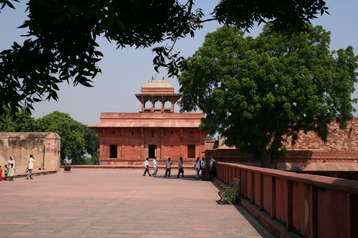
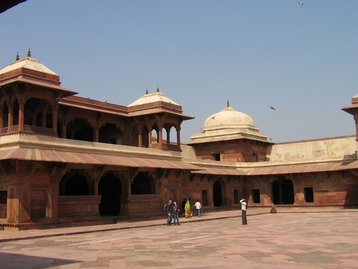
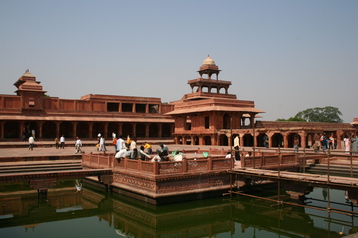
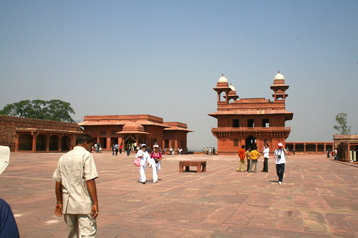
Fatehpur Sikri |
 |
 |
| House of Maryam, Akbar's Christian wife | Palace of Jodh Bai, a Muslim wife |
 |
 |
| Anoop Talao, or pool | Crossing the Pachisi Court to the Diwan-i-Khas |
It is thought that Akbar once played (or supervised the playing of) Pachisi in the court of the same name, with his wives occupying the places of the different pieces on the board. Since Akbar is said to have had 5000 wives, there were more than enough for the game. Competition to participate must have been fierce.
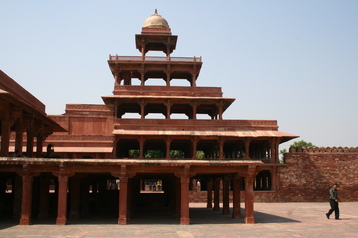 |
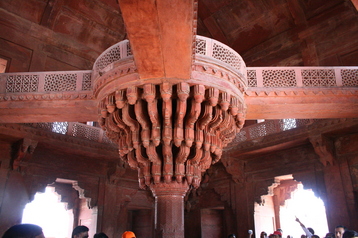 |
| Panch Mahal, where
Akbar's queens savored the evening cool |
Central pillar inside the
Diwan-i-Khas perhaps a meeting hall |
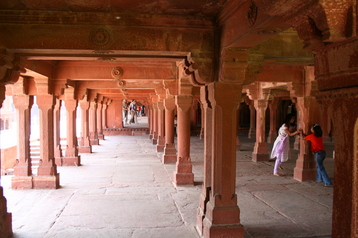 |
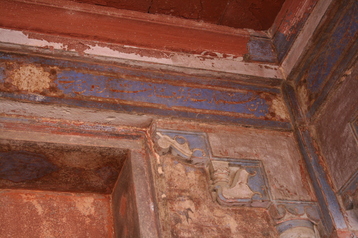 |
| Ankh Michauli -
youths still frolic where Akbar once may have played blind mans buff with his queens |
A few bits of
painting remind us of how colorful the walls once may have been |
Nearby is the huge mosque,
the Jama Masjid, which contains the tomb of the Sufi mystic and saint,
Salim Chishti, who predicted the birth of Akbar's first son. We were
lucky to visit on the day after the end of Ramadan, so festivities were
taking place.
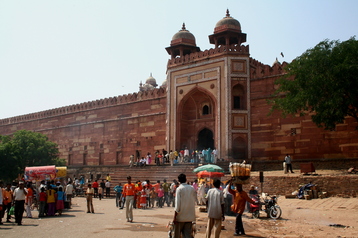 |
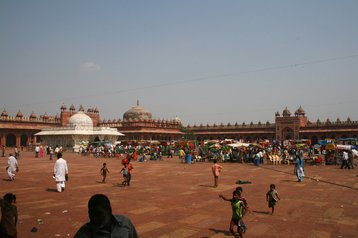 |
| Akbar's private entrance to the Jama Masjid | The courtyard of the mosque with the tomb of Salim Chishti |
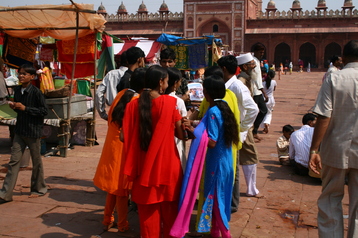 |
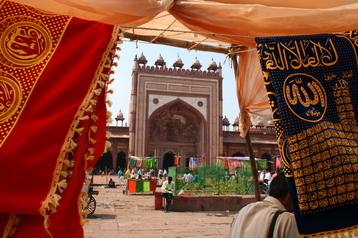
|
| Colorful salwar kameez wearers | Festive tissues and the main mosque |
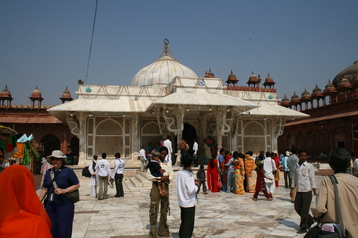 |
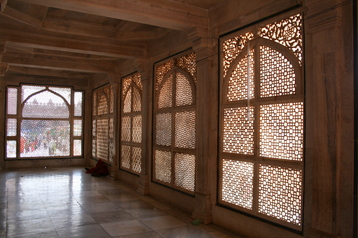 |
| The saint's tomb | Beautiful jalli inside the tomb |
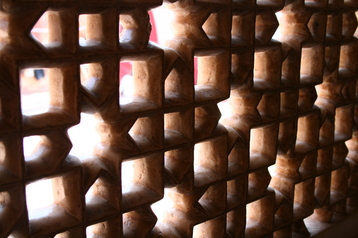 |
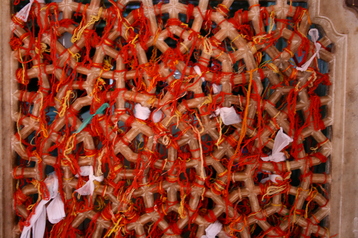 |
| Closeup of jalli | Colorful threads tied on one jalli by pilgrims (and tourists) are supposed to bring wish fulfillment |
Back to India 2007